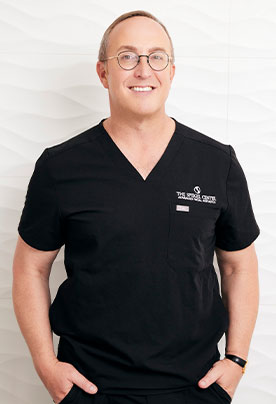
Laser treatment is commonly used to treat a variety of skin irritations such as excessive hair, unwanted tattoos and hyperpigmentation. Although it can be costly, many people turn to laser treatment as a long-term solution to their recurring skin problems. Advantages of laser therapy typically include minimal bloodshed with better therapeutic results and decreased chance of infection, making it a popular choice.
Expert Advice on Laser Treatment
Because laser treatment technology is so complex, it is crucial to choose the right equipment when removing tattoos and pigmented lesions. Dermatologist and laser expert George Hruza says practically any laser can spot melanin, but some lasers are superior to others. The pulse width must be less than 1 us in order to successfully target the melanosomes. If the pulse is higher than 1 us, it can cause a fatal disorder called epidermal necrosis.
Q-switched Lasers are More Accurate
Dr. Hruza highly recommends the use of Q-switched lasers when removing lesions and tattoos. Q-switched lasers are available in Nd:YAG, alexandrite and ruby, all of which are efficient. Long pulsed lasers and IPL are also adequate for these procedures but are more dangerous. This is why Dr. Hruza swears by Q-switched lasers for the treatment of separate lesions. Ablative lasers get rid of pigment by eliminating the epidermis. Therefore, partial ablative lasers should mainly be used for area treatments, to immediately remove a large number of lesions.
Pigmentation Treatments
Nevus of Ota is characterized as a hyperpigmentation of the face. For pigmented lesions like these, Dr. Hruza uses Q-switched lasers that pulse every nanosecond. For the best results, Dr. Hruza recommends putting off further treatment of melanocytic dermal lesions until at least 4 months after the previous session. Similarly, because of the potentially dangerous side effects produced by bulk heating of the lesion. Minocycline pigmentation also requires Q-switched lasers for treatment. However, Dr. Hruza believes that the amount of chromophore makes for a painful treatment.
Some Pigmentations are Difficult to Remove
Becker’s nevus is one pigmentation that has never been successfully treated long-term by Q-switched lasers, or any laser for that matter. This is due to a dermal component that sets off the pigmentation, preventing the laser from clearing the entire area. Neither is there a known laser treatment for melisma, but Q-switched and Nd:YAG lasers are best for temporary results. Rosacea, a skin condition that causes skin to swell and become red, is also difficult to treat but can be controlled by some lasers. On a lighter note, freckles are treatable using a fractional thulium laser, which requires annual treatment.
Tattoo Removal
For tattoo clearing, different ink colors require different lasers. Usually the best way to determine this is to select the color that is opposite of the tattoo color. Most tattoo treatments are spaced at least 6 weeks apart, longer for the legs, to allow time for the skin to heal. Facial tattoos typically require the least amount of treatments whereas leg tattoos can require upwards of 20 treatments. Multi-colored tattoos however, are nearly impossible to treat, as it would require several different lasers.
Although laser therapy is beneficial in many ways, there are also some risks that need to be acknowledged. Laser treatment can cause bleeding, pain, scarring, herpes and infection, which is why it is always important to go to a doctor who follows safe and clean practices.
Image Source: Flickr/Creative Commons/Jim Stanton





